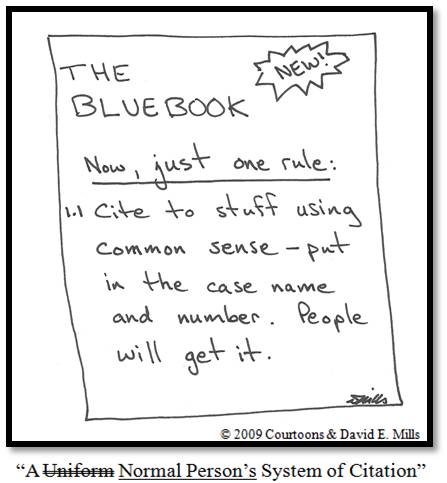
This guide1 is meant to offer quick links to some of the more common subciting materials, with a focus on U.S. primary laws. This is not an exhaustive list; please contact a librarian for additional help.
Plan your subcite
When going through an article, start by sorting out what should be easy to find from that which will be more challenging and time consuming. For example, most U.S. law review articles are available on HeinOnline. Finding law review articles is relatively fast and simple.
In contrast, books may be in the Law Library's collection, in LSU Library, or at another university altogether. In fact, some esoteric materials may need to be borrowed from other institutions, which takes time, sometimes weeks.
THE BLUEBOOK
The Bluebook should be your guide for determining where cited materials will be located; be sure to make good use of the Bluebook's Index and Tables.
Scanners & Copiers
Scanners are located on the library’s first floor; one in the Reserve Room and one near the Print Center. Photocopiers are located on the library’s first floor (near the entrance).

The Bluebook
The Bluebook: A Uniform System of Citation, 21st ed.
Copies of the Bluebook are available in the Reserve Room, at the Circulation Desk, and in Reference at KF245.B58.
Compiled by the Law Review editors of Columbia, Harvard, University of Pennsylvania, and Yale, this guide is the most heavily relied upon citation manual for law. It prescribes citation formats for most U.S. law sources.
Table One lists each jurisdiction's reporters, codes, and other primary sources, providing their citation formats and dates of coverage. For those citing foreign law in U.S. law reviews, the Bluebook is not comprehensive.
If the Bluebook does not address a source you wish to cite, use custom and, if possible, parallel citations. The overarching rule to follow is simple: provide as much information as possible to allow the reader to identify the exact document your author is referring to, while keeping with the known rules. Many times, accomplishing this goal will require mimicking a general Bluebook principle when citing a source that is not adequately contemplated in the current edition.
Additional help with foreign sources
Two resources are extremely useful for unpacking foreign-looking, well, foriegn citations:
From Cardiff University, the Cardiff Index to Legal Abbreviations provides the full title based on the abbreviations for legal publications. It covers case reporters and legal periodicals from the British Isles, the Commonwealth, much of Europe, and the United States, including sources of international and comparative law. Just plug in your source abbreviation and your results list will provide a source title (or several) for you to seek out elsewhere.
NYU's Guide to Foreign and International Legal Citations provides, among other things, some very useful examples of how to Bluebook various foreign sources. The second edition of this book is available in the Reference collection; the first edition is available for free online.